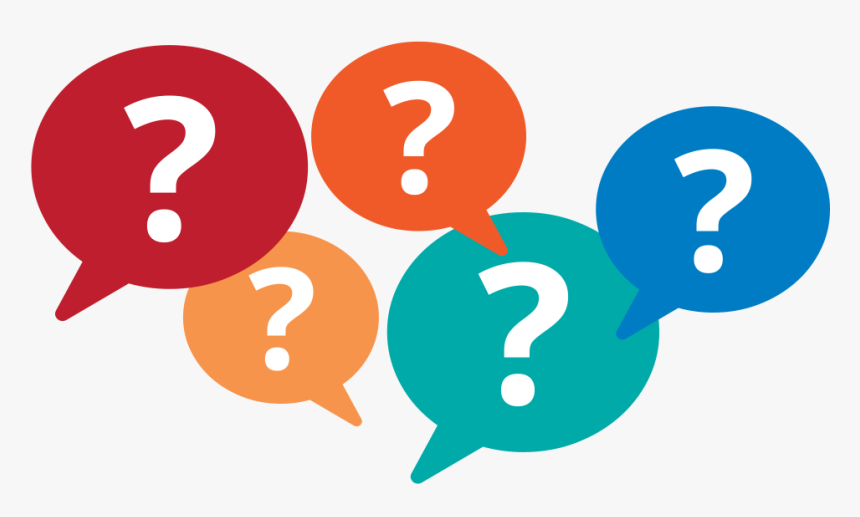We are often trying to keep conflict out of our personal lives, but as a writer, your task is to present an argument and convince your readers of the content you are putting out. ‘Logos’ is a term often used to describe the application of logical reasoning and logic when writing persuasive rhetoric or writing. The process of creating a logic-based argument may require time and effort but knowing the meaning of logos and the ability to effectively make logical appeals can thus enhance your writing and assist in engaging the reader.
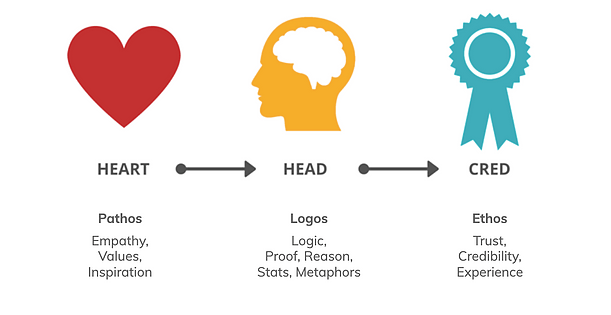
- What is Logos?
- What is the origin of Logos?
- Six examples of Logos
- Understanding applications in life
- What is the difference between Logos, Pathos, and Ethos?
- Logos and various types of Proof
- Logos Proof vs. Affirmative Proof
- Why do writers use Logos?
- Use logos in combination
- Define Logos for Yourself
- Examples of Logos in Literature
- FAQ
What is Logos?
Logos is an appeal that is rhetorical or persuasive to the viewer’s logic and rationality. Logos examples are found within argumentative essays and convincing arguments along with poetry and literature.
What is the origin of Logos?
‘Logos’ is a Greek word that has a myriad of meanings, including “reason,” “discourse,” and “plea,” among others. The Greek philosopher Aristotle defined the word “logos” in his book Rhetoric and used logos to refer to “reasoned discourse” specifically, in the context of public speaking. Aristotle believed that logos was one of three major methods of persuasion, along with pathos and ethos. Aristotle believed that logos surpassed the other two because the power of an argument relied on a convincing appeal to logic.

Six examples of Logos
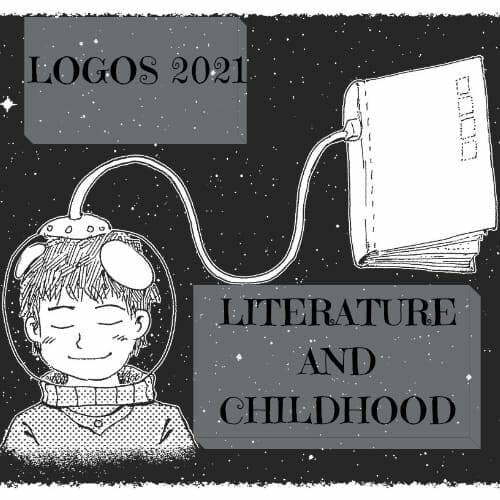
Arguments that are logical and strong draw people to your perspective and can help you avoid mistakes in logic, also called logic-based fallacies. Logical thinking should be structured and readers thus ought to observe you build an argument step-by-step. It’s definitely easier to convince your audience if they observe every step you’ve taken to reach your conclusion in the end.
Understanding applications in life
Politics City Council meeting which provides evidence of previous vehicle collisions to illustrate the need for installation of a better traffic signal.
Plays Early Greek dramatists often wrote whole plays around philosophical arguments. Sophocles Drama Antigone can be built on a battle between King Creon as well as his daughter Antigone about whether Antigone’s brother deserves burial rituals. Both characters wear logos in their persuasive arguments against each other.
Novels in Harper Lee’s To Kill a Mockingbird the closing courtroom scene includes an ebullient appeal to the jury of attorney Atticus Finch. He is arguing methodically and rationally to finally prove his client’s innocence.
Newspapers Columnists and reporters rely on logos to communicate the logic behind a story or finally convince their readers. One instance of logos you could find is an editorial in the newspaper listing giving instances of the effectiveness of literacy programs for children, advocating for their further expansion.
Poems A majority of Shakespeare’s sonnets are composed of passionate pleas on part of a narrator that makes use of logos to show their affection and get an exchange of their affection.
Advertisements Adverts often rely on logic-based arguments to convince their intended customers to buy products or services. An advertisement for toothpaste could, for instance, offer statistical evidence to prove its effectiveness in keeping cavities at bay.
What is the difference between Logos, Pathos, and Ethos?
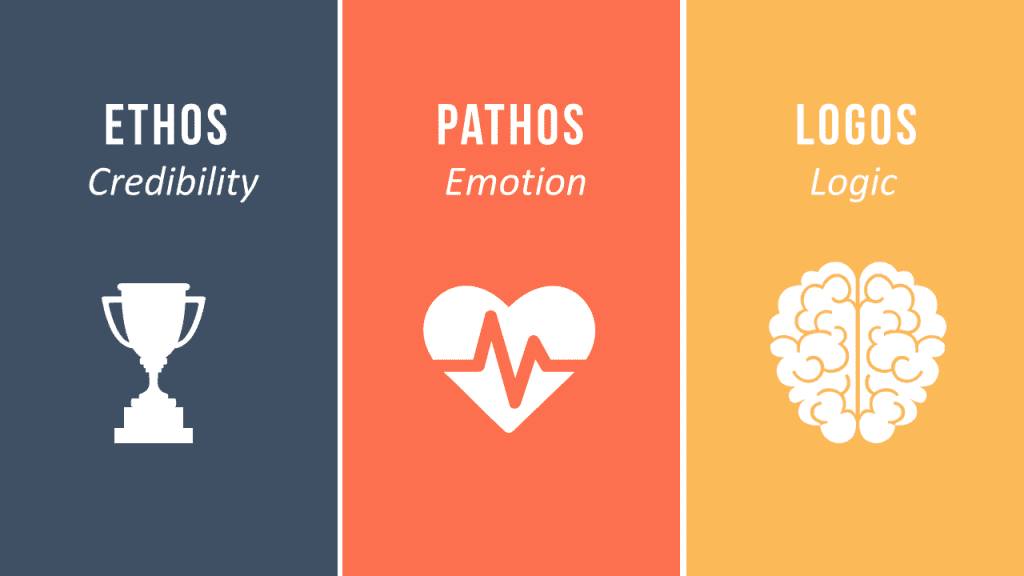
Although he was adamant about the significance of the logos, Aristotle laid out several other methods of persuasion Aristotle believed were essential in constructing and presenting a convincing argument. They included:
- Pathos A plea to emotion is referred to as pathos. Pathos typically relies on literary devices, such as metaphors, or especially passionate prose. The emotional appeal is an essential element of persuasiveness, but certain philosophers such as Plato warned against excessive reliance on emotions. A well-thought-out and economical application of pathos may assist in balancing out the more stoic calls to logic that logos could cause. Find out more about pathos here.
- Ethos: Aristotle described Ethos as a rhetorical call to action intended to show the speaker’s credibility, knowledge, and moral strength. It is an effective way to ground arguments in the experiences and expertise of the author. Well, being great complement to logos, emphasizes the argument’s logic by focusing on the credibility of the writer as well as his past knowledge in relevant areas. Find out more about Ethos here…
Whatever the medium, Logos is a hugely crucial element of writing. Making logical arguments and using a methodical argument effectively can aid in writing a persuasive essay or provide internal reasoning in the decisions of fictional characters. It is an important idea for writers to learn and use.
Logos and various types of Proof
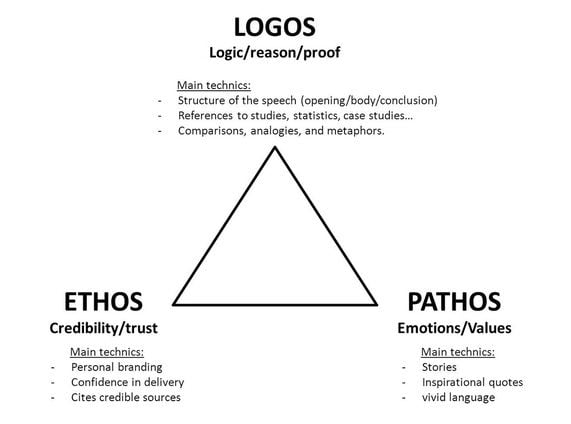
Although it’s not difficult to identify speakers using logos when they speak about research results or statistics numeric data is just one type of format which logos can use. Logos is any phrase, statement, or argument which tries to convince using evidence, and these facts need to be the product of a lengthy study. “The truths” in an argument could be derived from the person who is presenting it or from the world around them and using these examples to justify one’s position can also be a form of logos.
Consider this instance in Sojourner Truth’s “Ain’t I an woman?” speech that defended women’s rights: “The guy over there claims that women should be helped into carriages and carried over ditches and have the best location anywhere. No one ever assists me in the carriages or over the mud-puddles, nor does anyone give me a perfect place! Aren’t I an Asian woman? Check me out! See my arm! I’ve plowed, planted, and then gathered into barns, and nobody could steer me! Aren’t I an Asian woman?”

Truth is a sign of her power and the fact that she can complete physical tasks like a man to prove gender equality. The point is that she’s still appealing to the minds of her audience however, instead of presenting abstract facts about reality or numerical proof instead, she’s providing the details of her personal experience as proof. In this instance, the logic behind this argument can be described as anecdotal (meaning it’s made up of a small number of personal experiences) instead of purely conceptual, however, it does go to prove the fact that a logo doesn’t need to be stoic and scientific to be effective.
Logos Proof vs. Affirmative Proof
Some speakers who employ logos can be trusted blindly. According to Aristotle states definition of ‘logos’, logos can be “proof, or evident evidence.” Speakers may provide facts, figures, or research findings to prove that they’ve “done their homework” in an attempt to achieve the level of credibility that is typically associated with scientific research and arguments based on evidence. A speaker could give facts in a manner that is completely or in part incorrect, and use those facts (and as a result, logos) to support an assertion that seems plausible, but argues for the opposite. Another reason that can cause a text or speech to give the appearance of providing a proof appearance of proving its validity is the use of long words and technical terms. However, the fact that someone appears clever doesn’t necessarily mean that the argument is logical.
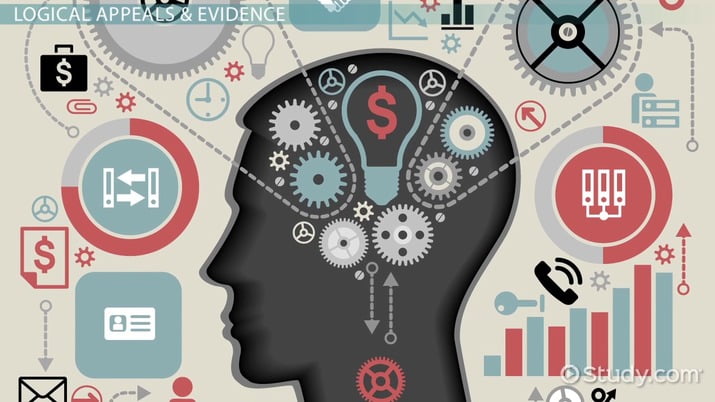
Even if facts have been altered or manipulated, any argument that is based on, or even asserts that it is based upon “facts” to convince the listener’s reasoning is an instance of logos. In other words, logos don’t mean making use of facts correctly or accurately and accurately, but it’s about using the facts in any manner to influence the audience.
Why do writers use Logos?
It is important to remember that the three methods of persuasion typically complement each other. They don’t need to be utilized in isolation from each other. The same sentence could contain examples of each of the three. While logos are distinct from the pathos and ethos (an appeal for the public that is based on the authority of the speaker) as well as pathos (a call to emotions of the audience) and pathos, the use of logos could provide a solid supplement to the use of either ethos or pathos, and in reverse.
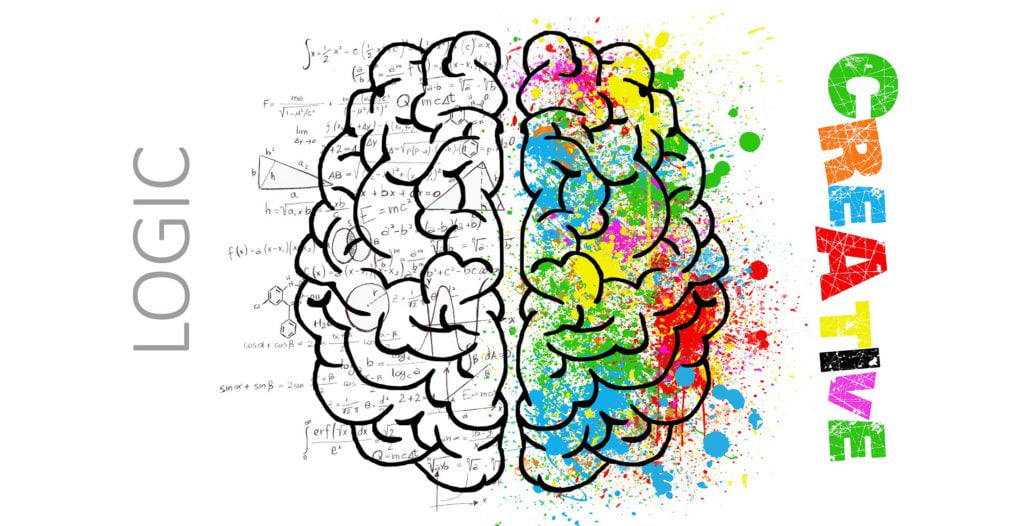
For example,
if someone in the political arena mentions the number of casualties during a war or recites statistics related to a specific issue of national importance the facts might draw the attention of the audience’s emotions as well as their minds and thus enhance the pathos as well in the form of logos elements of the speech. Look at this excerpt from Michelle Obama’s Speech during ‘The Partnership for a Healthier America Summit’. In it, she updates the audience on the results in her ‘Let’s Move!’ project to improve nutrition for children:

Just think about what our cooperation can mean for a young child that is born in the present. Maybe, that child is among the 1.6 million kids who attend healthy daycares where vegetables and fruits are replacing sugar and fruit juice. If that child is enrolled in school, perhaps she’ll be among the nearly 30 million children eating healthier school meals that we have fought for. Maybe she’ll be one of 2 million children with a “Let’s Get Moving!” Salad Bar at the school she attends as well as one among the 9 million children participating in Let’s Get Moving! Active Schools who receive 60 minutes of exercise each day or among the 5 million students who are soon taking part in healthy after-school programs.
While Obama provides statistics to convince her viewers to believe that “Let’s move!” was a hit (logos), she’s also using statistics and facts to create excitement for the cause (pathos).
Use logos in combination
The rhetoric of logos doesn’t need to be only a stand-alone thing. As I mentioned earlier an effective commercial or video incorporates three different appeals.
We’ll show you instances of pathos, ethos, and logos being used in commercials. What is the meaning of logos? It means much more when it has aspects of ethos and pathos. It is the most efficient when all three points can poke at the eye as a team.
Think about taking a look at this Old Navy commercial. Check it out and observe how it combines a mixture of logos and ethos and pathos all at the same simultaneously.
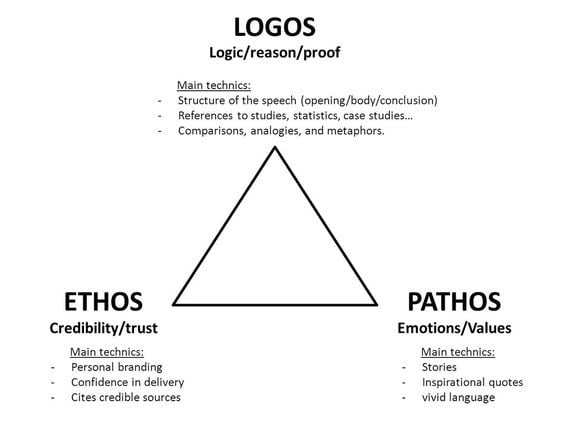
This isn’t bad, right? Let’s look at what works.
Julia Louis-Dreyfus is a haughty mom, and she is a perfect fit for the ethics. Her appearance on the show means that Old Navy’s Old Navy brand gets instant scores for trust and respect.
The commercial is hilarious it’s relatable and is emotionally resonant as well. The viewers feel the child’s pain. It’s not uncommon for us to be there; we’ve all been humiliated by our parents. Pathos? Check.
Finally, the logo buttons it up. The cool kids say that they bought their clothes from Old Navy. The jeans are $8 and the T-shirt was $4. These are the facts and figures at the center of the brand’s appeal.
Another example of ethos, pathos, and logos that work together is from Microsoft.
Ethos? They know what they’re doing. Perhaps they’re not famous But they’re certainly experts in video games. They’re charming and reputable. This is why ethos gets a slap.
Pathos, you bet. More than anything else, this commercial stirs emotions. It’s inspirational, touching, and full of the essence of what is human.
The logo’s definition is revealed through details and specifications for the Xbox Adaptive Controller. What is it, what it does, and the reason it’s so important? Logos appeal that is in the middle with its friend’s ethics and emotion.
Define Logos for Yourself
Bring logos into your projects
What is the meaning of logos? Logos is a call to logic, reasoning which makes use of facts information, data, features, and specifications also.
It’s referred to as “the appealing rationale” to explain a reason.

When you use the logos rhetoric we think about the bigger image. The examples above of the ethos and pathos and logos that work together are proven to be effective repeatedly as we’ve seen in the previous paragraphs also.
Therefore, write the logo’s definition in your mind, then watch these logos and then begin using the knowledge you’ve acquired.
Examples of Logos in Literature
Example 1: Political Ideals (By Bertrand Russell)
“The wage system has made people believe that what a man needs is work.
This, of course, is absurd. What he needs is the goods produced by
work, and also the less work involved in making a given amount of goods,
the better … But owing to our economic system … was a better system would
produce only an increase of wages or a diminution in the hours of work
without any corresponding diminution of wages.”
In this passage, Russell is also presenting arguments against the unfair distribution of wealth and the consequences. He responds with logic and explains that the reason for this inequality is due to the flaws of institutions. He concludes that capitalism, as well as the wage system, must be eliminated to improve the economic system.
Example 2: The Art of Rhetoric(By Aristotle)
“All men are mortal.
Socrates is a man.
Therefore, Socrates is mortal.”
Aristotle uses Syllogistic arguments in this instance, but certain arguments, as well as assertions, aren’t stated. Because Socrates is a human being, thus, he’s mortal, and all humans are mortal. They will eventually end up dying. This is also the reason for this logic in this.
Example #3 Study of the Humanities (By Francis Bacon)
“Reading maketh a full man; conference a ready man; and writing an exact man.”
The example is precise concise, precise, and brimming with argumentation, and also a deductive or conclusion. First, Bacon points out what conferences, reading (discussion) and writing are while laying out the reasoning and logic to write, read, or attend a conference.
Example #4 of Study (By Francis Bacon)
“Crafty men condemn studies, simple men admire them, and wise men use them; for they teach not their use; but that is wisdom without them, and above them, won by observation.”
This is also an excellent illustration of logos. This is where Bacon talks about the issue of theories versus abilities. There is a difference between reading and non-reading. He believes that a person who reads is superior to those who stick to the things they know. He believes that reading is important as it helps improve abilities as well.
Example #5 Othello (By William Shakespeare)
Within Othello, Iago also plans to cause the demise of his captain Othello. Iago can engineer a series of events that make it appear like the wife of Othello, Desdemona, is cheating on Othello. The suspicion of the wife’s infidelity afflicts Othello who has just engaged with Desdemona against the wishes of her father. In this scene in Act 3, Scene 3, Iago manipulates Othello by the use of logos. Iago “warns” Othello not to fall prey to paranoia while he fans the flames of this paranoia
Oh, beware, my lord, of jealousy!
It is the green-eyed monster which doth mock
The meat it feeds on…..
Who, certain of his fate loves not his wronger,
But, oh, what damnèd minutes tells he o’er
Who dotes, yet doubts— suspects, yet soundly loves…
She did deceive her father, marrying you…
She loved them most….
I humbly do beseech you of your pardon
For too much loving you….
Iago in this scene teaches Othello about the dangers of jealousy. However, he then uses reason and deduction to argue that, since Desdemona fooled her beloved father by getting married to Othello Iago, she’d likely be willing to fool Othello as well.
Example #6 Logos in Don Delillo’s White Noise
In this scene taken from Part 2 of the novel by Don Delillo “White Noise”, Jack Gladney along with his young son Heinrich looks through binoculars at an Airborne Toxic Event, or cloud of poison gas, which is just affecting their town. Jack in denial is also trying to convince his child that the poison gas cloud will not be directed at them and that there’s no reason to be concerned. Heinrich disagrees:
“What do you think?” he said.
“It’s still hanging there. Looks rooted to the spot.”
“So you’re saying you don’t think it’ll come this way.”
“I can tell by your voice that you know something I don’t know.”
“Do you think it’ll come this way or not?”
“You want me to say it won’t come this way in a million years. Then you’ll attack with your little fistful of data. Come on, tell me what they said on the radio while I was out there.”
“It doesn’t cause nausea, vomiting, shortness of breath like they said before.”
“What does it cause?”
“Heart palpitations and a sense of deja vu.”
“Deja vu?”
“It affects the false part of the human memory or whatever. That’s not all. They’re not calling it the black billowing cloud anymore.”
“What are they calling it?”
He looked at me carefully.
“The airborne toxic event.” …
“These things are not important. The important thing is location. It’s there, we’re here.”
“A large air mass is moving down from Canada,” he said evenly.
“I already knew that.”
“That doesn’t mean it’s not important.”
“Maybe it is, maybe it isn’t. Depends.”
FAQ
Question 1. What are literary logos?
Answer – Logos is an argumentative or rhetorical appeal to the reader’s rationality and logic. Logos examples are found in argumentative writing as well as persuasive arguments, as well as poetry, and literature.
Question 2. What is an example of logos in literature?
Answer – When you use logos in debate, this means you’re making use of facts, such as statistics or data, or common sense to present your point. As an example: Echo is a dog. Every dog wags their tag.
Question3. How did Aristotle define logos?
Answer – The Greek philosopher Aristotle defined Logos within his works Rhetoric in which he defined the word “logos” to refer to “reasoned speech”, specifically for public speaking. … Aristotle thought logos were superior to the other two in that the success of any argument was dependent on a convincing logical appeal.
Share with your friends

